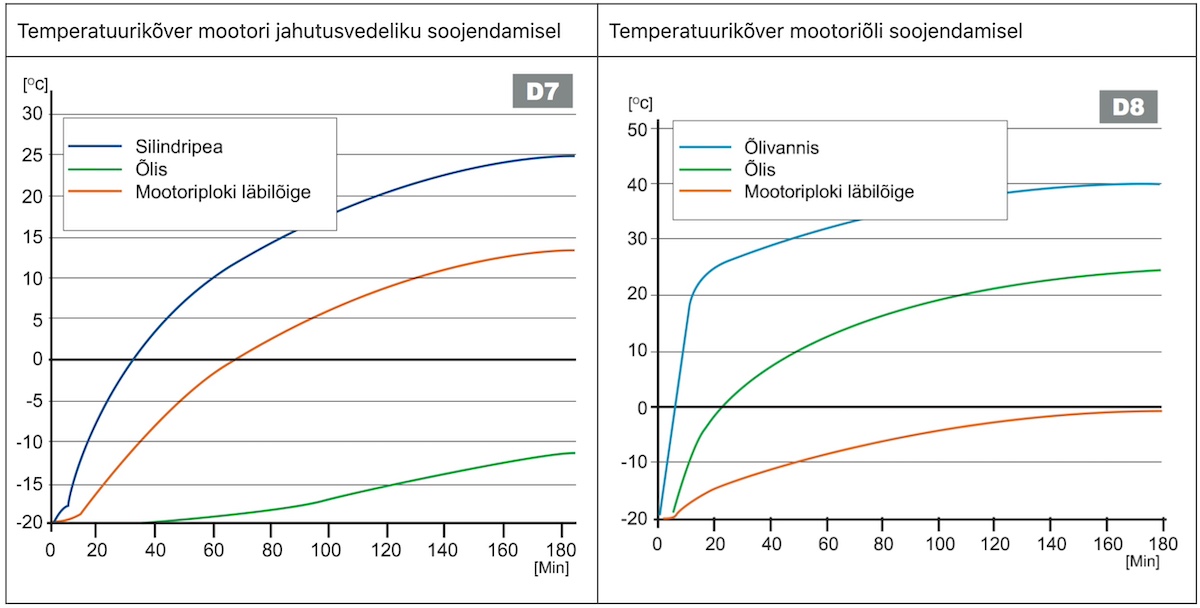What is important to know when buying preheater
There are 3 types of preheaters. The first type is installed between the slack in the cooling system and heats the coolant. The second type is installed in the cylinder block and also heats the coolant. The third type is mounted on the bottom of the crankcase (surface mount heater) and heats the oil. For each car model, there is a special element depending on the characteristics of the engine.

In the case of the engine pre-heater, it should be taken into account that it has a relatively low power (300-500W) and in -15 frost it takes at least 2 hours for the engine temperature to rise above zero. The purpose of the preheater is to make starting the engine as easy as in the summer – to be able to start it at a plus temperature and significantly shorten the time it takes to warm it up to operating temperature.
The power of the electric cabin heater is 1400-1900W and it also takes at least 2 hours for the temperature to rise above zero and for the feeling of sitting in a warm car to arise.
- The easiest and cheapest solution is to install a pre-heater, a wire and connect to the mains. The plug is in the socket – the car warms up, you remove the plug – the car does not warm up. You can also use a simple socket timer from a hardware store.
- There is a timer in the car, where you set the time and duration of operation before switching on, plug the plug into the socket and the system turns on by itself at the right time. You need to get inside the car to change the time or turn it on manually. In this kit, the charger will always charge the battery when the plug is in the socket, and the heater will turn on at the specified time.
- For remote control, a remote control or bluetooth module is used for control from a smartphone. You can control the preheater connected to the socket, set the operating time, turn it on and off at a certain distance from the car. Also in this kit, the charger will always charge the battery when the plug is in the socket, and the heating will turn on at the specified time.
When installing an electric heater, it is very easy to add a battery charger to the system, which will run and charge the battery while heating the engine and cabin. We recommend installing this if you typically have short 15-30 minute drives. This keeps the battery charged, extends its life, and most importantly, avoids surprises when the car just won’t start on a winter morning.
On cars older than 10-15 years, where the preheater element must be installed in the cylinder block, it is very often difficult to unscrew the cap at the place of installation of the element. This is caused by rusting or oxidation of the cap. Attempts to unscrew such a cap by force are associated with the risk of damaging this place. However, its repair will be expensive. We may refuse such installation. There are not very many cars with this problem, and as a rule, we already know them and inform you in advance that it is not possible to install it in our workshop.
Some types of cabin sensors are sensitive to air movement, so the alarm may sound when the heater is running. These are so-called ultrasonic sensors that look like small microphones. Most often, such a problem occurs with additional alarms, but it does not occur very often.
In any case, it is important to consider these risks, because solving the problem of alarm activation is not included in the price of installing the heater. It is always an additional service for which you have to pay separately.
This problem can be easily solved by turning off the cabin sensors when you intend to use the heater. If there is no such function, the sensitivity of the sensors or the speed of the cabin fan can be reduced to reduce the air movement in the cabin. If it is an additional alarm and none of the proposed methods help, the solution is either to replace the sensor with another one that is suitable for working with the heater, or to completely remove the sensor.